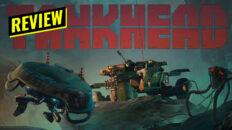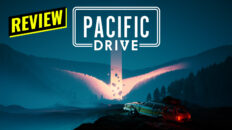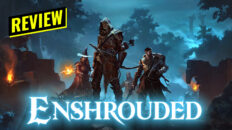Developer: Firaxis
Publisher: 2K
Reviewed on: PC
Purchased.
XCOM: Chimera Squad is a small-scale spin-off of the long standing XCOM series. While it’s size and price may be limited, it’s ambition is not. It takes the series’s familiar turn-based combat and adds a few refreshing twists that make Chimera Squad stand out. The tweaks made to the out-of-combat management portions, however, are little more of a mixed bag. At any rate, Chimera Squad is definitely worth your time if you’re looking for some great tactical action and a whole lot of character.
Chimera Squad takes place after the events of XCOM 2 in City 31, an experimental city designed to bring humans aliens together. You take control of Chimera Squad, a division of XCOM tasked with keeping the peace on the often rough streets of City 31. At the start of the game a political tragedy throws the city into disarray and you have to figure who was behind the plot. The city is occupied by many different factions, criminal and otherwise, and you will encounter them all during your investigations. You’ll also get to meet a rather colorful cast of characters that make up the backbone of the story.
The last bit is a significant departure from previous games because you do not get to recruit and customize your soldiers. Each soldier you recruit has a very specific backstory and set of skills they can unlock, which are tied to their class. All the characters are well written with unique and well delivered dialogue, and often banter back and forth. The skills you unlock are also unique and often very powerful. However, they cannot die in combat. If they are taken out then will go into “stasis’ and recover after a few missions. So while the discrete characters are a welcome change on one front, it also significantly reduces the risks you take in battle because fear of permanently losing an important soldier is removed.

Soldier recruitment is only a small portion of what you do out of combat, however. There isn’t quite as much to do as there is in a mainline XCOM game, but it’ll keep you busy. You can send soldiers out on errands that get you one of the game’s three types of currency: credits, intel, and Erelium. When they are away they cannot be used in battle, so it’s important to choose wisely. You can also send units into training, which can improve their skills or heal wounds incurred in battle. Again, they will be down and out for a few days when you do this. Finally, you can purchase and research new equipment using your resources. It’s not super deep and there is no base to build or expand, but it does break up the action nicely.
You’ll be spending most of your down time looking at the city map which shows the missions you can take and also a breakdown of how much unrest there is in each district of the city. Your goal here is to choose the best mission each day to keep unrest low while also achieving your main goals. There are multiple problems to deal with each day and you can only choose one to complete, so no matter what unrest is going to go up a little. However, it is pretty easy to keep unrest at a low level.

The map can be a little confusing and there are different types of color-coded missions. Some are real simple and all you do is click a button to complete it, but hey at least you get some money, right? Others are quick side missions that usually reward with equipment and some resources. Then there are main investigation quests that move the story forward. While there are extensive tutorials that pop up the very first time you enter the map, it’s a lot to take in all at once. Some tool-tips would have helped to decipher everything that goes on here to make sure you don’t miss anything important.
Once you choose a combat mission the real XCOM begins. You select your squad, equip them with weapons and utilities then send them into battle. Combat is broken up into rooms and each room begins with a breach. You stack your squad up at a number of possible breach points, each one offering attributes both good and bad. You may get accuracy or surprises bonuses, but also have an increased chance to take damage. Once you breach you get a slow-motion action camera view of your squad entering the room. You then get to take an action with each squad member. Breaching is a cool way to begin combat encounters and really gets the action rolling. While it can be confusing and the action camera can be bad, it lets you prioritize targets right out of the gate and really makes you feel like an elite counter terrorism squad.

The other significant change to the combat is how units take their turns. Instead of the traditional you go, they go routine, each unit now occupies a spot on a mixed timeline. This means you often trade moves back and forth with the enemy. After moving or attacking with one unit, then an enemy unit will make their move, so on and so forth. This means you need to make judgement calls based on which unit is up next as well which is the most dangerous because you only have one shot to lay down damage before it’s their turn. There are ways to move your units around in the turn order so you can stack up your moves, but this is only useful when you can set up a solid punch against a powerful enemy. The timeline order makes combat feel more realistic and keeps it moving at a fast pace.
Otherwise, the combat is pretty standard tactical fare. Each unit has a certain number of actions they can take like moving, healing, or performing special moves. Some actions will use multiple points and shooting will always end the unit’s turn. There are also melee units now that much get right next to an enemy to attack. These open them up to counter attacks, but they are very powerful and can be used to draw focus away from other units. Overwatch is handled a little differently here as you set up cones of observation and the unit will only attack if an enemy unit moves within that cone. This is exceptionally useful for setting up choke points or keeping tabs on specific enemies. It’s a small change, but one that makes Overwatch a much more tactical decision than ever before.

After completing the mission objectives, which run the gamut from eliminating all enemies, securing a VIP, or collecting/destroying something, you get an after action report. You’re rated on how much damage dealt, taken, and if you subdued any enemies as opposed to killing them. Subdued enemies have a chance to provide intel, so there is an incentive not to kill everyone. You then go back to the map room and check on your squad and projects, rinse, repeat.
I will say that I encountered a number of glitches mostly during combat. UI elements randomly disappeared and reappeared, obfuscating important information in the middle of combat. It can also be difficult to know what is a doorway and what is a wall because of the level art. I’ve also been shot through walls by enemies. The out of combat menus can also be a little confusing with no tool-tips or ways to repeat tutorials. Suffice it to say, this seems to be where the game’s budget price shows up the most.
XCOM: Chimera Squad is a very competent, if not fully baked, slice of XCOM. It tries a few new things to mix up an aging formula, and succeeds in most cases. Some of the changes may put off diehard fans of the series, but it’s hard to complain too much when this is clearly meant as a way to test out some new features in a long-running series. The technical issues are a shame, but the production values are much higher than most games at this price. I hope the next big entry in the XCOM series brings some of the new additions seen here like the improved Overwatch system and maybe some of the unique characters. However, even if it ends up being a one-off, I am glad it exists because I am sure it’s ideas will show up in games far beyond the XCOM brand.








